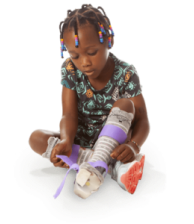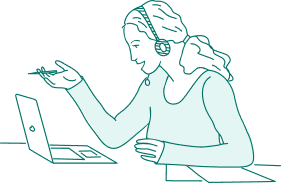What is athetoid cerebral palsy?
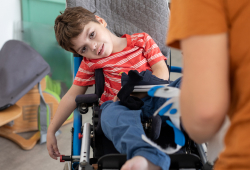 Athetoid cerebral palsy is a type of CP that makes it hard for children to control how they move. It can cause twisting, jerking movements, or muscles that alternate between being very stiff and very floppy.
Athetoid cerebral palsy is a type of CP that makes it hard for children to control how they move. It can cause twisting, jerking movements, or muscles that alternate between being very stiff and very floppy.
Many symptoms of cerebral palsy appear slowly, often when a baby shows developmental delays like sitting up, crawling, or grasping toys. These motor challenges may continue as the child grows, affecting their ability to walk, use their hands, or speak clearly.
If you’re worried your child may have cerebral palsy, getting a diagnosis is an important step. Our team includes registered nurses who are here to listen, explain what could have happened during birth, and help you get the answers you deserve.
“The Cerebral Palsy Guide difference is the nurses. We have a combined experience of over 60 years working on the labor and delivery unit.”
– Beth Carter, RN, On-Staff Registered Nurse
While there is no cure, treatment for athetoid CP may improve function and prevent complications as your child grows, but it can be costly. If the condition was caused by a preventable birth injury, financial support may be available.
We’ve connected thousands of families with qualified local cerebral palsy lawyers. Our trusted legal partners have secured over $1 billion in birth injury compensation, and they may be able to help you, too.
Connect with a nurse today — at no cost — to see if we can help your family take the next step.
Causes and risk factors of athetoid CP
Athetoid cerebral palsy is caused by damage to the parts of the brain that control movement, including the basal ganglia, thalamus, and cerebellum. This brain damage usually occurs during pregnancy, delivery, or shortly after birth.
- Birth asphyxia: A lack of oxygen during delivery
- Blood clotting disorders: Conditions that reduce oxygen supply to the brain
- Genetic mutations: Rare changes in DNA that affect brain development
- Infections: Toxoplasmosis, rubella, or cytomegalovirus (CMV)
- Kernicterus: Severe jaundice left untreated can lead to brain damage
- Low birth weight or prematurity: Babies born early are at higher risk of brain injury
Some of these causes, like genetic changes, may not be preventable. However, others may involve missed warning signs or delayed medical care, especially during labor and delivery.
Can medical negligence cause athetoid cerebral palsy?
In some cases, yes, the athetoid type of cerebral palsy can be the result of medical malpractice that leads to preventable brain damage. This happens when doctors, nurses, or other health care providers fail to act quickly or follow proper procedures during childbirth.
- Delaying a necessary C-section
- Failing to treat severe jaundice
- Ignoring or mismanaging maternal infections
- Missing signs of fetal distress
- Misusing forceps or vacuum extractors
If a medical mistake caused your child’s condition, your family may be entitled to compensation for care, therapy, and long-term needs.
However, there are strict legal deadlines, called statutes of limitations, that apply. If you miss your window, you may lose the chance to take legal action forever. Don’t wait. Our team can help you understand what may have gone wrong.
Get a free case review right now to see if your family may be eligible for financial support.
Athetoid cerebral palsy symptoms
Athetoid cerebral palsy affects the way a child moves and controls their muscles. The most recognizable symptom is uncontrolled movement, but signs may not appear right away.
In many cases, symptoms gradually show up as a baby misses key milestones in the first year of life. Children with athetoid CP often have trouble controlling movement in their hands, arms, feet, or face.
Muscle tone may shift between too stiff (hypertonia) and too floppy (hypotonia), which can make everyday tasks like sitting, holding toys, or feeding very difficult.
Speech, posture, and coordination can also be affected. Athetoid CP symptoms are often unpredictable and may get worse when the child is stressed or trying to focus. Learn more about what to watch for in your baby below.
Early signs of athetoid CP in babies
Some signs of athetoid CP may appear in the first few months of life, but others may not be noticeable until a baby misses developmental milestones.
Here are 7 early signs that could mean your child has cerebral palsy:
- Delayed motor skills, like rolling over, sitting up, or crawling
- Favoring one side of the body, such as reaching with only one hand
- Feeding difficulties, such as trouble sucking or swallowing
- Floppy or stiff muscle tone that changes from day to day
- Poor head control by 3 to 4 months of age
- Trouble holding objects or letting go when asked
- Unusual movements, like slow, twisting motions in the hands or face
Our nurses are here to help you understand if the symptoms you're noticing could be the athetoid type of cerebral palsy. You can talk to one of our nurses in private, and it’s always free. Connect with a nurse now.
Types of involuntary athetoid movements
Athetoid cerebral palsy is one form of dyskinetic CP, a type of cerebral palsy that causes uncontrolled movements due to brain damage affecting motor control.
Dyskinetic CP includes several movement patterns, and many children with athetoid CP experience a mix of them.
- Athetosis: Slow, writhing movements, often in the hands, feet, or face
- Chorea: Sudden, jerky motions, especially in the fingers or toes
- Choreathetosis: A combination of both athetosis and chorea
- Dystonia: Twisting or repetitive movements, sometimes affecting posture
- Dyskinesia: A general term for any type of involuntary movement
Because these symptoms can overlap, some children are diagnosed with mixed-type cerebral palsy, like spastic-dyskinetic CP or choreoathetoid cerebral palsy, when they show signs of more than one movement disorder.
What parts of the brain are affected by the athetoid type of cerebral palsy?
Athetoid cerebral palsy happens when certain areas of a baby’s brain are damaged. These areas help control how the body moves.
When the brain is injured, it can lead to the unpredictable motions and muscle tone problems seen in athetoid CP. Learn more about what parts of the brain are affected below.
Basal ganglia damage
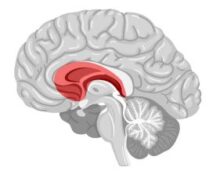

If this area is damaged, a child may have trouble controlling their muscles. This can lead to twisting motions, jerky movements, or sudden changes in muscle tone.
Cerebellum damage
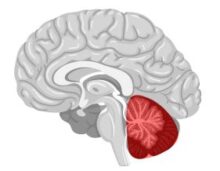

While cerebellum damage is less common in athetoid CP than basal ganglia damage, it can still affect how a child moves and responds to the world around them.
Thalamus damage
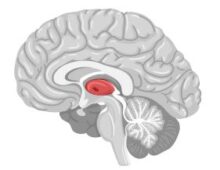

Damage to the thalamus can affect how the brain manages motor function, which may contribute to the involuntary movements seen in athetoid CP. Though less common, thalamic injury can be involved in some cases of dyskinetic cerebral palsy.
Athetoid cerebral palsy treatment
Getting the right cerebral palsy treatment can help children with athetoid CP gain more independence, improve daily function, and prevent future complications. Therapies are often tailored to each child’s needs and may change as they grow.
Many children with the athetoid type of cerebral palsy benefit from a combination of treatments to manage symptoms and improve quality of life. Learn more about the most common athetoid cerebral palsy treatment options below.
Physical therapy
Cerebral palsy physical therapy focuses on improving movement, strength, and posture. Children with athetoid CP may struggle to control their limbs or hold themselves upright, and therapy can help strengthen muscles used for balance and coordination.
Therapists often use stretching, guided movement exercises, and tools like resistance bands to build strength and reduce stiffness or floppiness. In some cases, facial and tongue muscles may be targeted to help with grimacing, drooling, or speaking.
Occupational therapy
Cerebral palsy occupational therapy helps children develop the skills needed for daily life, including dressing, eating, writing, and using mobility devices. For children with the athetoid type of cerebral palsy, occupational therapy often focuses on improving hand control, grip strength, and coordination.
Therapists may use play-based activities, adaptive tools, or weighted exercises to help children build confidence and independence at home, in school, and in social settings.
Speech therapy
Children with athetoid CP may have trouble speaking, swallowing, or controlling facial muscles. Speech therapy can improve communication skills, help with breathing and voice control, and make eating safer and easier.
Over time, many children gain better control over their mouth, lips, and tongue through regular speech therapy sessions.
Medication
CP medications are often used to treat symptoms or related conditions in children with athetoid cerebral palsy.
Medications used to treat athetoid cerebral palsy may include:
- ADHD medications: Such as Ritalin®, which may help with focus and behavior
- Anticonvulsants: To reduce seizures
- Medications for drooling or reflux: To manage feeding and swallowing issues
- Muscle relaxants: To ease involuntary movements
- Sleep aids or antidepressants: For children struggling with sleep or emotional health
All medications should be carefully monitored by a doctor to manage side effects and adjust as needed.
Surgery
Cerebral palsy surgery is less common in children with athetoid CP, but it may be considered in some cases. Procedures can help correct joint dislocations or muscle imbalances caused by abnormal movement patterns or high muscle tone.
Orthopedic surgery and other procedures may be recommended based on a child’s individual needs and how their condition progresses with age.
Get help for your child’s cerebral palsy
If your child has been diagnosed with athetoid cerebral palsy, getting the right support can make all the difference. This type of CP often causes unpredictable movements and lifelong challenges that most families are not prepared to face alone.
If you believe something went wrong during labor or delivery, you deserve answers. A single medical mistake may have caused the brain damage that led to your child’s condition — and taking action now could help you secure the care they need.
Cerebral Palsy Guide is committed to helping families affected by preventable birth injuries. Our network of trusted lawyers has recovered over $1 billion for birth injuries, including athetoid cerebral palsy.
Call our trained patient advocates at (855) 220-1101 or get a free case review right now to find out how we can help.



